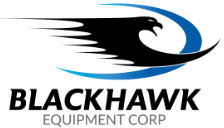What ISO 8573-1 Class 0 Really Means for Your Air Quality
08/04/2025

Debunking the Myth of 'Class Zero': What ISO 8573-1 Class 0 Really Means for Your Air Quality
In the world of high-purity compressed air for critical applications like food and beverage, pharmaceuticals, and electronics manufacturing, the term "Class Zero" is frequently specified. It sounds like the ultimate standard—the absolute pinnacle of purity, a guarantee of zero contaminants. However, this is one of the most significant and potentially costly misunderstandings in the compressed air industry. Many engineers and purchasers believe that Class 0 is a standard, predefined classification for "zero oil" or "zero contamination." This is fundamentally incorrect. As of August 2025, with increasing demands for process integrity and product safety, clarity on this topic is essential. At Blackhawk Equipment, our role as system experts involves guiding our clients to the correct air purity specification. Let's debunk the myth and clarify what ISO 8573-1 Class 0 actually is, and why this distinction is critical for your operations.
frequently specified. It sounds like the ultimate standard—the absolute pinnacle of purity, a guarantee of zero contaminants. However, this is one of the most significant and potentially costly misunderstandings in the compressed air industry. Many engineers and purchasers believe that Class 0 is a standard, predefined classification for "zero oil" or "zero contamination." This is fundamentally incorrect. As of August 2025, with increasing demands for process integrity and product safety, clarity on this topic is essential. At Blackhawk Equipment, our role as system experts involves guiding our clients to the correct air purity specification. Let's debunk the myth and clarify what ISO 8573-1 Class 0 actually is, and why this distinction is critical for your operations.
A Primer on the Standard: Understanding ISO 8573-1
To understand Class 0, we must first understand the standard from which it comes. ISO 8573-1 is the internationally recognized standard for compressed air quality. It provides a common language and a clear framework for classifying air purity based on the maximum allowable levels of three primary contaminants:
-
Solid Particulates: The standard defines classes based on the maximum number of particles allowed per cubic meter, categorized by particle size (e.g., 0.1 to 0.5 microns, 0.5 to 1 micron, etc.).
-
Water: Purity is defined by the maximum allowable pressure dew point (PDP), which is the temperature at which water vapor will begin to condense into liquid at the system's operating pressure.
-
Total Oil: This is a crucial category, and it includes oil in all three forms: liquid oil, fine oil aerosols, and oil vapor.
For each of these contaminants, the standard outlines specific purity classes, numbered from 1 (the most stringent, with defined limits) up to 9. For example, to meet ISO 8573-1 Class 1 for total oil, the compressed air must contain ≤ 0.01 mg/m³ of oil. This is a fixed, universally understood limit.
Debunking the Myth: The True Definition of Class 0
Here is the most important takeaway: ISO 8573-1 Class 0 is not a predefined purity class with a limit of "zero." In an industrial setting, achieving a true "zero" level of any contaminant is physically impossible.
-
Class 0 is a Custom, More Stringent Specification:

-
Instead, Class 0 is a special category defined in the standard as: "As specified by the equipment user or supplier and more stringent than Class 1."
-
This means the responsibility falls on the facility engineer or equipment manufacturer to define the specific, measurable purity limits for their Class 0 requirement. For example, a pharmaceutical company might specify their Class 0 requirement as having a total oil content of ≤ 0.005 mg/m³, which is stricter than the Class 1 limit of 0.01 mg/m³.
-
-
The Critical Role of Third-Party Certification:
-
When a reputable compressor manufacturer, like Sullair with some of their oil-free models, markets a compressor as "Certified Class 0," it carries significant weight. This claim means that a respected, independent third-party organization (such as the TÜV Rheinland) has subjected the compressor to rigorous testing according to the stringent methods outlined in the ISO 8573 standard.
-
The certification then validates that the compressor, under specified test conditions, can produce an air quality that meets a particular purity level—one that is stricter than Class 1. This certification provides an objective, verifiable guarantee of performance, turning an ambiguous claim into a proven capability.
-
Why This Distinction is Critically Important for Engineers
-
The Risk of Ambiguous Specifications: If an engineer simply writes "air must be Class 0" on a technical specification or purchase order without defining the specific limits, the requirement is technically meaningless and unenforceable. It creates ambiguity and risk in the procurement process.
-
Enabling True "Apples-to-Apples" Comparisons: Understanding the role of certification allows for a fair comparison of oil-free compressors. An unverified claim of "Class 0" is not the same as a TÜV-certified Class 0 rating. Engineers should always ask for the third-party certificate and review the specific purity levels that were tested and verified.
-
Ensuring Process Integrity and Regulatory Compliance: For industries where air comes into direct or indirect contact with the product (e.g., food, pharmaceuticals, electronics), meeting a specific and validated purity level is essential for product safety, consistency, and compliance with regulations from bodies like the FDA or standards from the Global Food Safety Initiative (GFSI).
How to Achieve and Maintain Verifiable High-Purity Air
Consistently achieving air quality that meets Class 1 or a certified Class 0 specification requires a complete systems approach. It is never about a single component in isolation.
-
The Foundation: Start with an Oil-Free Compressor:
-
For applications demanding the highest level of air purity and risk mitigation, the industry standard is to start with a compressor technology that does not introduce oil into the compression chamber. This includes oil-free rotary screw, scroll, or centrifugal compressors. While the initial investment is higher, this design eliminates the primary source of hydrocarbon contamination and the risk of a catastrophic separator failure releasing bulk oil downstream.
-
-
The Essential Air Treatment Train:
-
An oil-free compressor still ingests all the contaminants present in the ambient air. Therefore, a comprehensive and correctly sequenced air treatment system is absolutely mandatory. This typically includes:
-
High-efficiency particulate and coalescing filters to remove atmospheric dust, water aerosols, and hydrocarbon vapors from the intake air.
-
An advanced air dryer (often a heatless desiccant dryer) to achieve the very low pressure dew point required.
-
Additional filtration downstream of the dryer to remove any desiccant dust and ensure final purity.
-
-
-
The Distribution System: Don't Re-Contaminate Your Pure Air:
-
To maintain air purity to the point of use, the piping network must be constructed from non-corrosive materials like stainless steel or specialized coated aluminum. An old carbon steel pipe system can shed rust and scale, completely negating the investment in a high-purity generation system.
-
-
Validation Through Testing:
-
The only way to truly know if your system is meeting its required purity class is through regular, professional air quality testing.
-
Blackhawk Equipment: Your Partner in Navigating Air Purity Standards
The world of air purity standards can be complex. At Blackhawk Equipment, we provide the clarity and expertise needed to design a system that meets your exact needs without over-specifying or under-protecting your process. We help our clients by:
-
Assisting you in understanding and defining the precise ISO 8573-1 class required for your specific application.
-
Specifying the right equipment, whether that is a certified Class 0 oil-free compressor for the most critical need, or a reliable oil-flooded compressor with a robust filtration train to achieve a guaranteed Class 1.
-
Designing the complete, integrated system—from the compressor and treatment train to advising on piping—required to achieve and maintain your desired air purity.
-
Offering air quality testing services to validate your system's performance and ensure ongoing compliance.
Conclusion: Specify with Certainty, Operate with Confidence
The term "Class Zero" is powerful, but its power comes from a clear understanding of its true meaning. ISO 8573-1 Class 0 is not an off-the-shelf purity level; it is a custom, high-stakes specification where performance must be guaranteed by verifiable, third-party certification. By moving beyond the myth of "zero," engineers can specify compressed air systems with certainty, compare equipment fairly, and design systems that provide the absolute air purity their critical processes demand. Achieving this level of quality requires a deep understanding of the standards and a holistic system approach from start to finish.
Contact Blackhawk Equipment to discuss your high-purity compressed air requirements. Let our experts help you navigate the standards and engineer a compliant, reliable, and effective solution that gives you complete confidence in your air quality.
